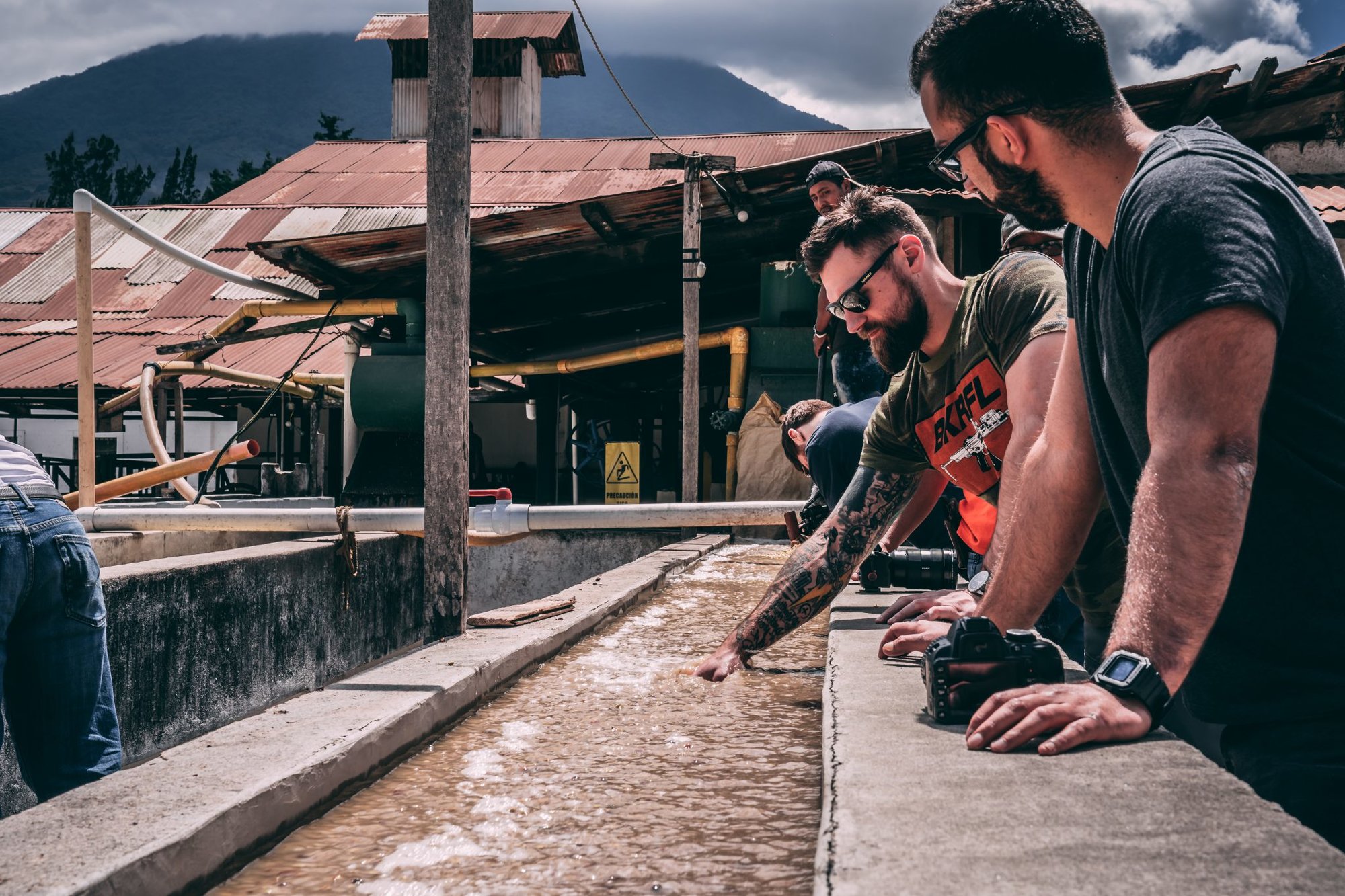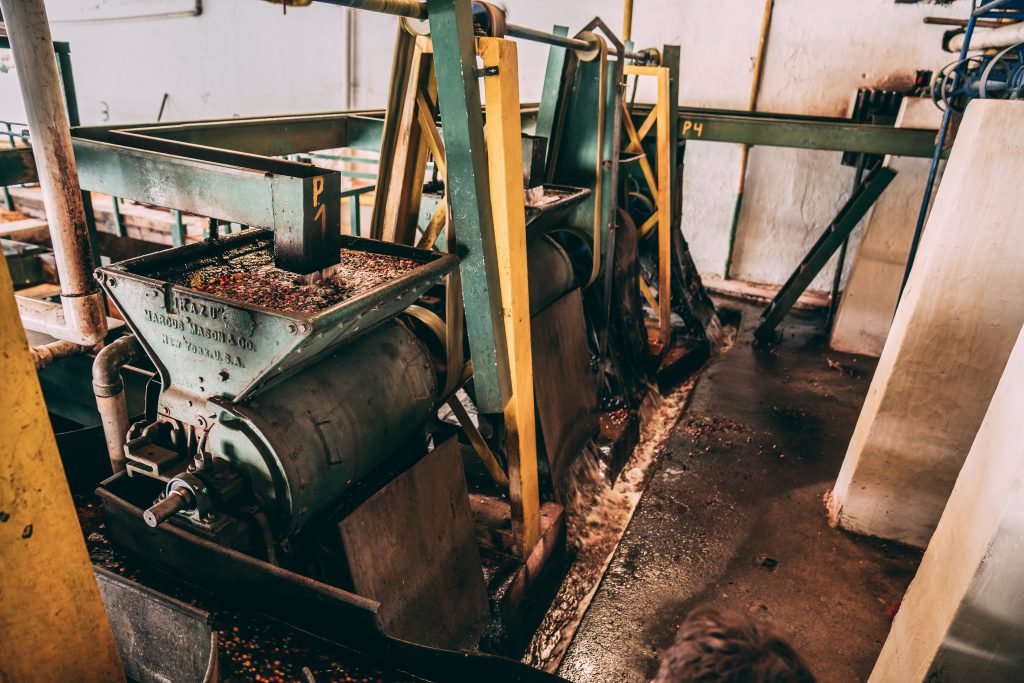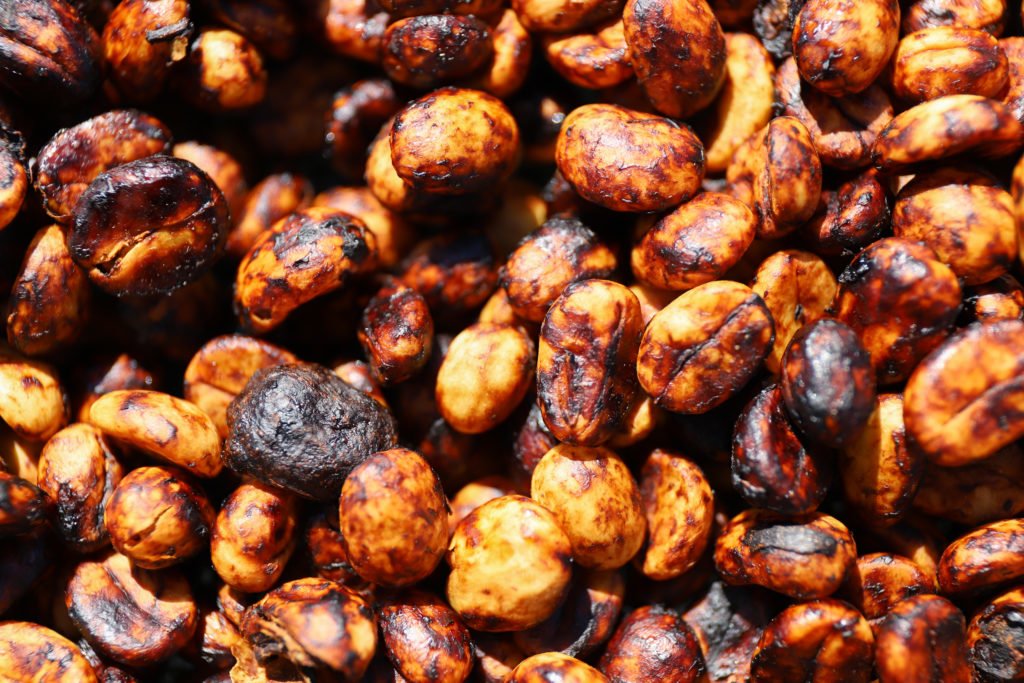What’s the Difference Between Natural, Washed, and Honey Processed Coffee?

Coffee being washed on the Finca el Potrero farm in Antigua, Guatemala. Photo by Marty Skovlund Jr./Coffee or Die Magazine.
The coffee world is full of nuance and depth. Two similar beans could have vastly different flavor profiles depending on a plethora of external factors, such as altitude, geography, weather, cultivation techniques, and — arguably the most important outside of the roast level — the processing technique. The average Joe may be able to differentiate dark roasts, light roasts, and countries of origin, but the processing technique usually goes over their heads.
But before talking about coffee processing, it’s important to understand the makeup of a coffee bean.
First, a coffee bean isn’t really a bean. It’s actually more akin to a seed, making coffee cultivation closer to fruit farming than it is to bean farming. Coffee starts its life on a tree that can grow up to 10 meters (32 feet) in the wild, primarily in a region of the world known as the coffee belt. These trees grow the fruit that eventually becomes coffee, known as coffee cherries. The cherry starts off green but turns red as it ripens and harvesting season approaches.

After the cherries are harvested, that’s when the different processing methods begin, and the seeds can end up with drastically different flavors.
There are a multitude of ways to process coffee around the world, but the three most common are the washed, natural, and honey processes. Each technique has benefits and drawbacks. For example, the most common and consistent processing technique — washed — is low risk, low reward. Washed coffee is what most “grocery story” coffee drinkers are familiar with. The coffee cherry is harvested, then mechanically processed using pressurized water and fermentation to remove all of the outer layers of the cherry, leaving just the seed. This results in more acidic coffee with a bit more clarity, and the beans can be processed in higher volume due to the industrial nature of the method.
The other two processes, natural and honey, vary from washed in that they make use of the sweeter, fruity parts of the coffee cherry. Natural and honey processing can be thought of as two ends of a spectrum of coffee processing dictated by how many layers of the coffee fruit are removed after harvesting but before roasting.
Natural processing, also known as dry processing, is the oldest method of coffee processing, originating in Ethiopia and Yemen around the same time that coffee was first discovered. Due to its age, the means of processing are low tech and affordable. All that’s needed is a large table for the coffee fruit to dry and an arid environment, such as in Ethiopia.

This process requires all layers of fruit to remain on the coffee seed until suitably dried out and fermented with the sugars of the fruity layers. The seed is then stripped at a dry mill and roasted. This process results in the fruitiest strains of coffee with more diverse flavor notes and a milder sip, though it takes longer than most processes, and there is a risk of overfermenting the seed and tainting the flavor of the coffee.
The honey process acts as a bridge between the washed and natural processes. Originating in the 1970s in Costa Rica, the newest of the three primary methods includes some of the practicality of the washed method while maintaining a level of craftsmanship found in the natural method. After harvesting, the outermost layers of the coffee cherry are removed, leaving just the coffee seed and a sticky, honeylike layer of mucilage to which the method owes its name. The coffee beans, as in the natural method, are then left out to dry and ferment, though for a shorter period of time. After drying, the remaining mucilage is washed off with water.
The result is a sweet, mild coffee landing somewhere between the natural and the washed methods. This method is coming into vogue in recent years and has split into three separate processes on its own — yellow, red, and black honey, each defined by the amount of mucilage left on the seed.
Though everyone has their own tastes and opinions, there is no one correct way to process coffee. Each method has its merits and its drawbacks. Poorer regions can make better use of the natural method due to its affordability, but it limits output and consistency. The washed method is large, and efficient, but lacks diversity and is relatively expensive. The honey method requires a strong understanding of coffee, but the results are highly sought after.
Read Next:

Tim Becker is a freelance journalist and journalism student at Florida Atlantic University. Tim has a diverse set of interests including gaming, technology, philosophy, politics, mental health, and much more. If he can find an angle to write about something, he will. Aside from his interests journalism is his passion. He wants to change the world with his words and photography. Tim writes for a variety of publications including the GoRiverwalk Magazine, the FAU University Press, and his personal blog on Medium.
BRCC and Bad Moon Print Press team up for an exclusive, limited-edition T-shirt design!
BRCC partners with Team Room Design for an exclusive T-shirt release!
Thirty Seconds Out has partnered with BRCC for an exclusive shirt design invoking the God of Winter.
Lucas O'Hara of Grizzly Forge has teamed up with BRCC for a badass, exclusive Shirt Club T-shirt design featuring his most popular knife and tiomahawk.
Coffee or Die sits down with one of the graphic designers behind Black Rifle Coffee's signature look and vibe.
Biden will award the Medal of Honor to a Vietnam War Army helicopter pilot who risked his life to save a reconnaissance team from almost certain death.
Ever wonder how much Jack Mandaville would f*ck sh*t up if he went back in time? The American Revolution didn't even see him coming.
A nearly 200-year-old West Point time capsule that at first appeared to yield little more than dust contains hidden treasure, the US Military Academy said.












